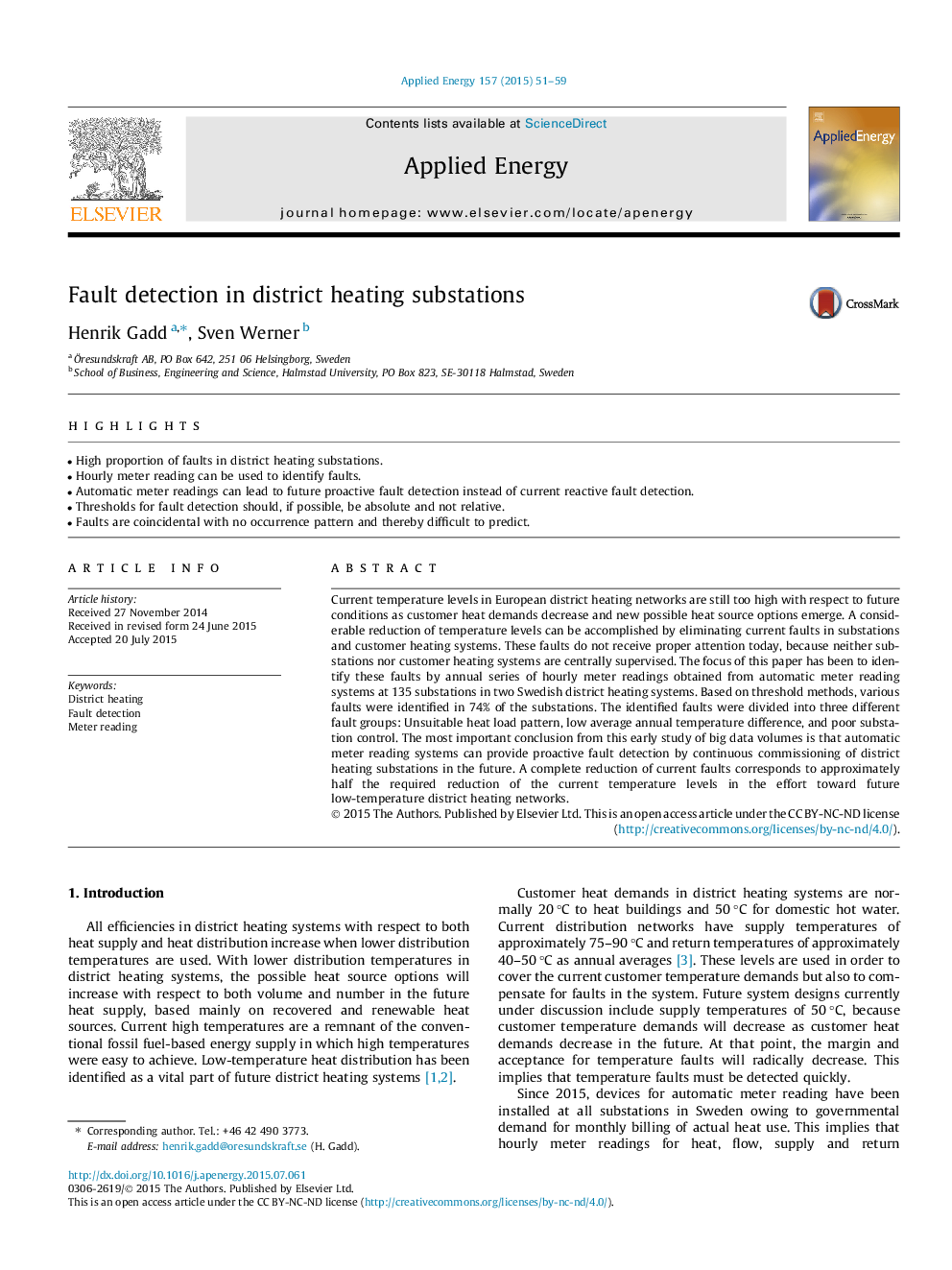| کد مقاله | کد نشریه | سال انتشار | مقاله انگلیسی | نسخه تمام متن |
|---|---|---|---|---|
| 6685851 | 501871 | 2015 | 9 صفحه PDF | دانلود رایگان |
عنوان انگلیسی مقاله ISI
Fault detection in district heating substations
ترجمه فارسی عنوان
تشخیص گسل در ایستگاه های برق منطقه ای
دانلود مقاله + سفارش ترجمه
دانلود مقاله ISI انگلیسی
رایگان برای ایرانیان
کلمات کلیدی
گرمایش منطقه، تشخیص گسل، خواندن متر،
ترجمه چکیده
سطوح دمای فعلی در شبکه های گرمایش مرکزی اروپا هنوز با توجه به شرایط آینده با توجه به شرایط مشتریان گرما کاهش می یابد و گزینه هایی برای گزینه های جدید گرما وجود دارد. کاهش قابل توجهی از سطوح درجه حرارت می تواند با حذف خطاهای جاری در پست های پست و سیستم های گرمایش مشتری انجام شود. این گسل ها امروزه مورد توجه قرار نمی گیرند، چرا که نه ایستگاه ها و نه سیستم های گرمایش مشتری تحت نظارت مرکزی قرار دارند. تمرکز این مقاله این است که شناسایی این گسل ها با استفاده از سالانه شمارش ساعت ها از سیستم های خواندن اتوماتیک در 135 ایستگاه در دو سیستم گرمایش مرکزی سوئدی انجام شود. بر اساس روش های آستانه، گسل های گوناگونی در 74٪ پست ها شناسایی شدند. گسل های شناسایی شده به سه گروه گسل مختلف تقسیم شدند: الگوی تابش گرمائی نامناسب، اختلاف دمای متوسط سالانه و کنترل پست های ضعیف. مهمترین نتیجه حاصل از مطالعه زود هنگام حجم داده های بزرگ این است که سیستم های خواندن اتوماتیک قادر به شناسایی خطا های پیشگیرانه با راه اندازی مستمر ایستگاه های برق منطقه ای در آینده می باشند. کاهش کامل نقص های جاری مربوط به تقریبا نیمی از کاهش مورد نیاز از درجه حرارت فعلی در تلاش برای شبکه های حرارت پایین در آینده در دمای پایین است.
موضوعات مرتبط
مهندسی و علوم پایه
مهندسی انرژی
مهندسی انرژی و فناوری های برق
چکیده انگلیسی
Current temperature levels in European district heating networks are still too high with respect to future conditions as customer heat demands decrease and new possible heat source options emerge. A considerable reduction of temperature levels can be accomplished by eliminating current faults in substations and customer heating systems. These faults do not receive proper attention today, because neither substations nor customer heating systems are centrally supervised. The focus of this paper has been to identify these faults by annual series of hourly meter readings obtained from automatic meter reading systems at 135 substations in two Swedish district heating systems. Based on threshold methods, various faults were identified in 74% of the substations. The identified faults were divided into three different fault groups: Unsuitable heat load pattern, low average annual temperature difference, and poor substation control. The most important conclusion from this early study of big data volumes is that automatic meter reading systems can provide proactive fault detection by continuous commissioning of district heating substations in the future. A complete reduction of current faults corresponds to approximately half the required reduction of the current temperature levels in the effort toward future low-temperature district heating networks.
ناشر
Database: Elsevier - ScienceDirect (ساینس دایرکت)
Journal: Applied Energy - Volume 157, 1 November 2015, Pages 51-59
Journal: Applied Energy - Volume 157, 1 November 2015, Pages 51-59
نویسندگان
Henrik Gadd, Sven Werner,
